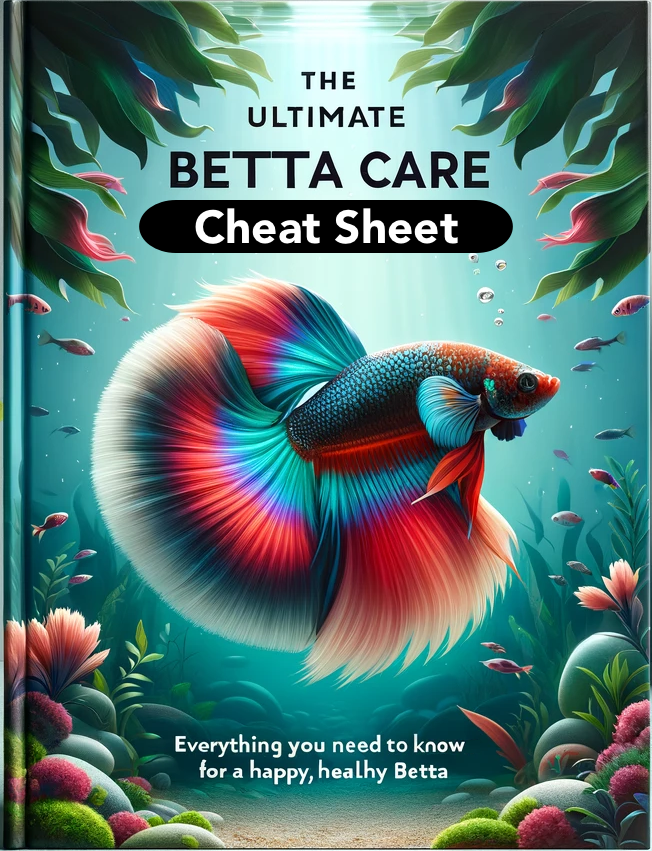Betta smaragdina – Emerald Betta – Full Caresheet

Photo credit: Fishy hub
Betta smaragdina, also known as the Emerald Betta, is a stunning freshwater fish native to Southeast Asia. Unlike their popular cousins, the Siamese Fighting Fish (Betta splendens), Betta smaragdina are peaceful, making them ideal candidates for community aquariums. With their shimmering green and blue scales and gentle nature, they bring a captivating presence to any tank. This guide provides everything you need to know about Betta smaragdina care, from their origins to successful breeding.
| Common Name | Emerald Betta |
| Scientific Name | Betta smaragdina |
| Origin | Southeast Asia (Thailand, Laos, Cambodia, Vietnam) |
| Habitat | Slow-moving streams, marshes, rice paddies; soft, slightly acidic water |
| Appearance | Vibrant, iridescent green and blue scales; males are more colorful with possible extended fins; typically 1-1.5 inches in length |
| Behavior | Peaceful, suitable for community tanks; minor intraspecies aggression possible during breeding |
| Ideal Tankmates | Small, peaceful species like rasboras, tetras, corydoras catfish, shrimp |
| Tank Requirements | Minimum 10 gallons for a single fish, larger for groups; pH 6.0-7.5, hardness 5-15 dGH, temperature 70°F-80°F |
| Filtration | Gentle filter; sponge or low-flow hang-on-back |
| Diet | Varied diet of high-quality pellets, frozen and occasional live foods; small portions multiple times a day |
| Breeding Tank Setup | 5-10 gallon tank; very soft water (2-5 dGH), pH ~6.5, temperature 78-82°F; small sponge filter, dense floating plants, leaf litter |
| Conditioning Breeders | Separate male and female, feed protein-rich diet |
| Spawning Process | Introduce female in clear container; male builds bubble nest, courtship, spawning under nest, remove female post-spawning |
| Fry Care | Remove male after fry become free-swimming; feed infusoria, microworms, baby brine shrimp; monitor health, perform small, matched water changes |
Origins and Wild Habitat
Betta smaragdina hail from the tropical regions of Thailand, Laos, Cambodia, and Vietnam. They inhabit slow-moving streams, marshes, and rice paddies with dense vegetation. These waters are typically soft and slightly acidic. Interestingly, Betta smaragdina can hybridize with other closely related Betta species in the wild.
Appearance
Betta smaragdina exhibit a vibrant, iridescent green and blue coloration that gives them their “emerald” name. Males are more colorful than females, and they may develop extended fins. They are smaller than Betta splendens, generally reaching around 1-1.5 inches in length. Understanding their subtle differences from Betta mahachaiensis is important for accurate identification.
Behavior
While Betta splendens are known for their aggression, Betta smaragdina are remarkably peaceful. However, some minor aggression within their own species is possible, especially during breeding periods. They are generally hardy fish but monitor them carefully in a community setup. Here’s where community tank challenges come in:
- Ideal Tankmates: Opt for small, peaceful species like rasboras, tetras, corydoras catfish, and shrimp. Avoid boisterous or fin-nipping fish.
- Space and Hiding Places: A spacious tank with ample vegetation, caves, and driftwood is vital for minimizing potential squabbles and providing a sense of security.
- Tankmate Temperament: Finding the right balance with tankmates is key. Overly timid fish might be outcompeted for food, while overly aggressive species can stress your Betta smaragdina.
Care
- Tank Size: 10 gallons is recommended for a single Betta smaragdina. For groups, scale up the tank size accordingly. Female bettas can coexist in groups of 4-6 in a larger tank with ample territory for each.
- Water Parameters: Maintain a pH between 6.0-7.5, water hardness of 5-15 dGH, and a temperature range of 70°F to 80°F.
- Filtration: Choose a gentle filter to avoid strong currents. Sponge filters or low-flow hang-on-back filters are excellent.
- Substrate and Décor: Use sand or soft aquarium soil. Include plenty of live or artificial plants, driftwood, and some leaf litter to mimic their natural environment.
- Diet: Offer a varied diet of high-quality betta pellets, frozen foods (bloodworms, brine shrimp, daphnia), and occasional live foods. Feed small portions several times a day.
Breeding Betta Smaragdina
Breeding Betta smaragdina is a rewarding experience, though it does require some preparation and careful observation. Here’s a detailed breakdown of the process:
Setting Up the Breeding Tank
- Tank Size: A 5-10 gallon tank is sufficient for breeding.
- Water Parameters: Aim for very soft water (2-5 dGH) and a slightly acidic pH (around 6.5). Use reverse osmosis or rainwater if your tap water is too hard. Maintain a temperature of 78-82°F.
- Filtration: A small sponge filter with minimal flow is ideal.
- Décor: Include dense floating plants like hornwort or water sprite for bubble nest building. Add leaf litter or Indian almond leaves to release tannins, simulating their natural habitat.
Conditioning the Breeders
- Separate the chosen male and female for a few weeks.
- Feed them a high-quality, protein-rich diet consisting of live foods like brine shrimp, or bloodworms, or daphnia. This will stimulate egg production in the female and nest-building behavior in the male.
Introducing the Pair
- Place the female in a clear container or breeding enclosure within the breeding tank. This allows them to see each other while protecting the female initially.
- Observe their behavior. The male will likely begin flaring and building his bubble nest. The female should exhibit vertical stripes and a swollen belly indicating her readiness.
- After a day or two, if both fish seem receptive, carefully release the female into the tank.
Courtship and Spawning
- The male will perform elaborate courtship displays, flaring his fins and chasing the female around the tank.
- Eventually, the pair will embrace under the bubble nest, releasing eggs and sperm. The male will collect the eggs and place them carefully within the nest.
- Once spawning is complete, remove the female back to her main tank to prevent aggression or egg-eating.
Caring for Fry
- The male will meticulously care for the eggs, ensuring they stay within the nest. The eggs usually hatch within 24-48 hours.
- Remove the male 3-4 days after the fry become free-swimming. They will feed on their yolk sacs and then require specialized foods:
- Infusoria: Microscopic organisms ideal for newly hatched fry.
- Microworms: Small worms suitable as fry grow.
- Baby brine shrimp: A nutritious food as they continue to develop.
Important Considerations
- Not all Betta smaragdina pairs will immediately spawn. Be patient, and if unsuccessful, condition them again and try at a later time.
- Monitor the fry closely for any signs of disease or deformity.
- As the fry grow, gradually start performing small water changes with water parameters matched to the breeding tank.
- Eventually, you’ll need to separate the fry into larger grow-out tanks to promote healthy development.





